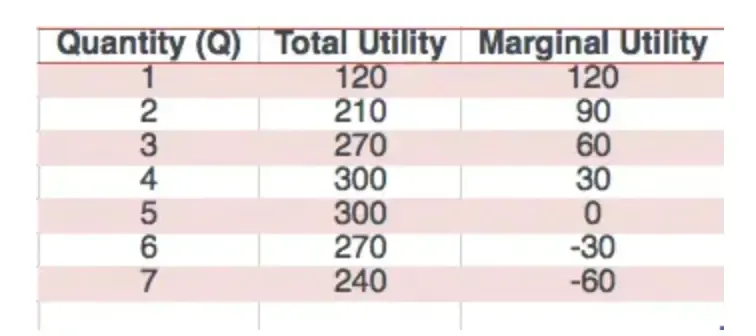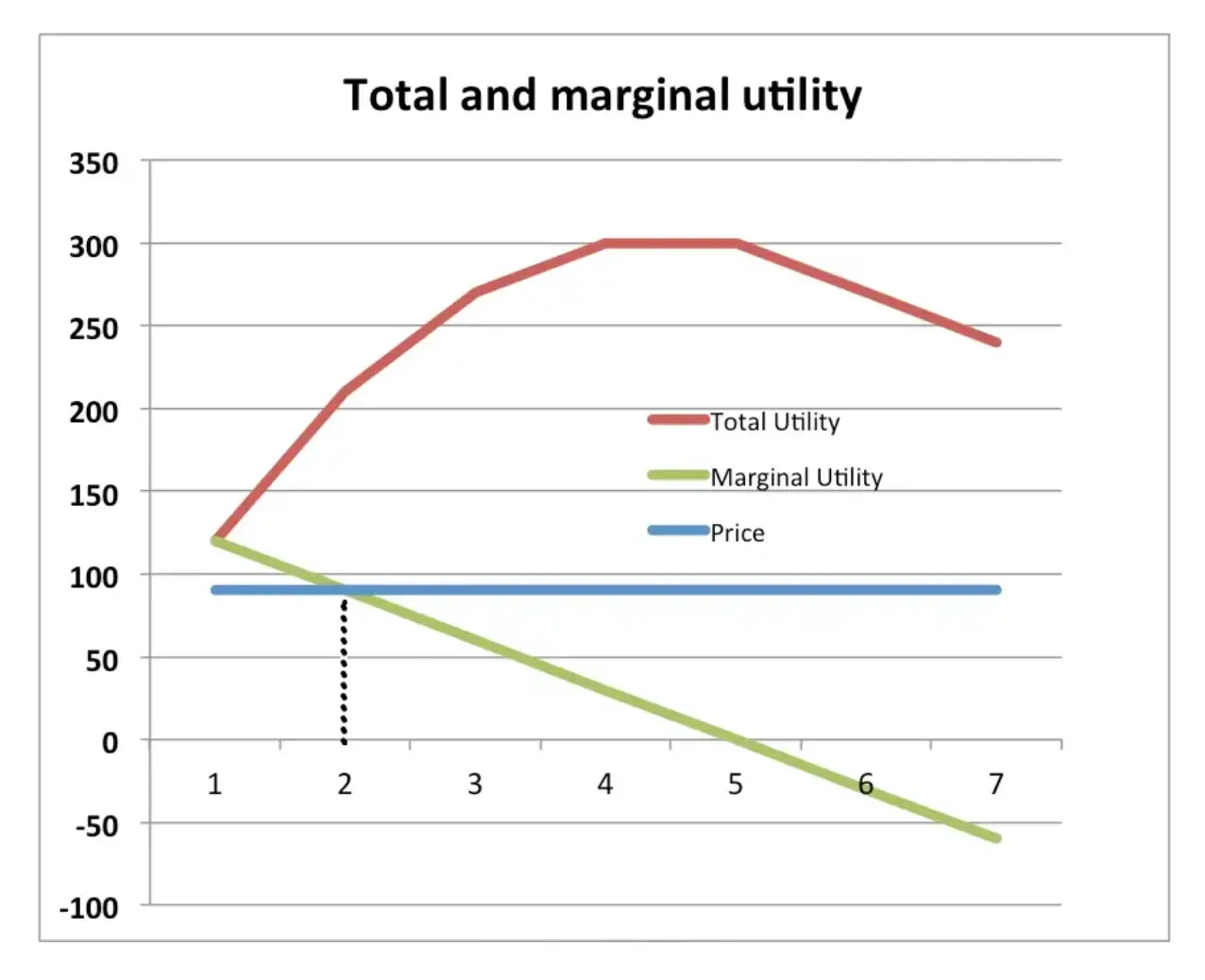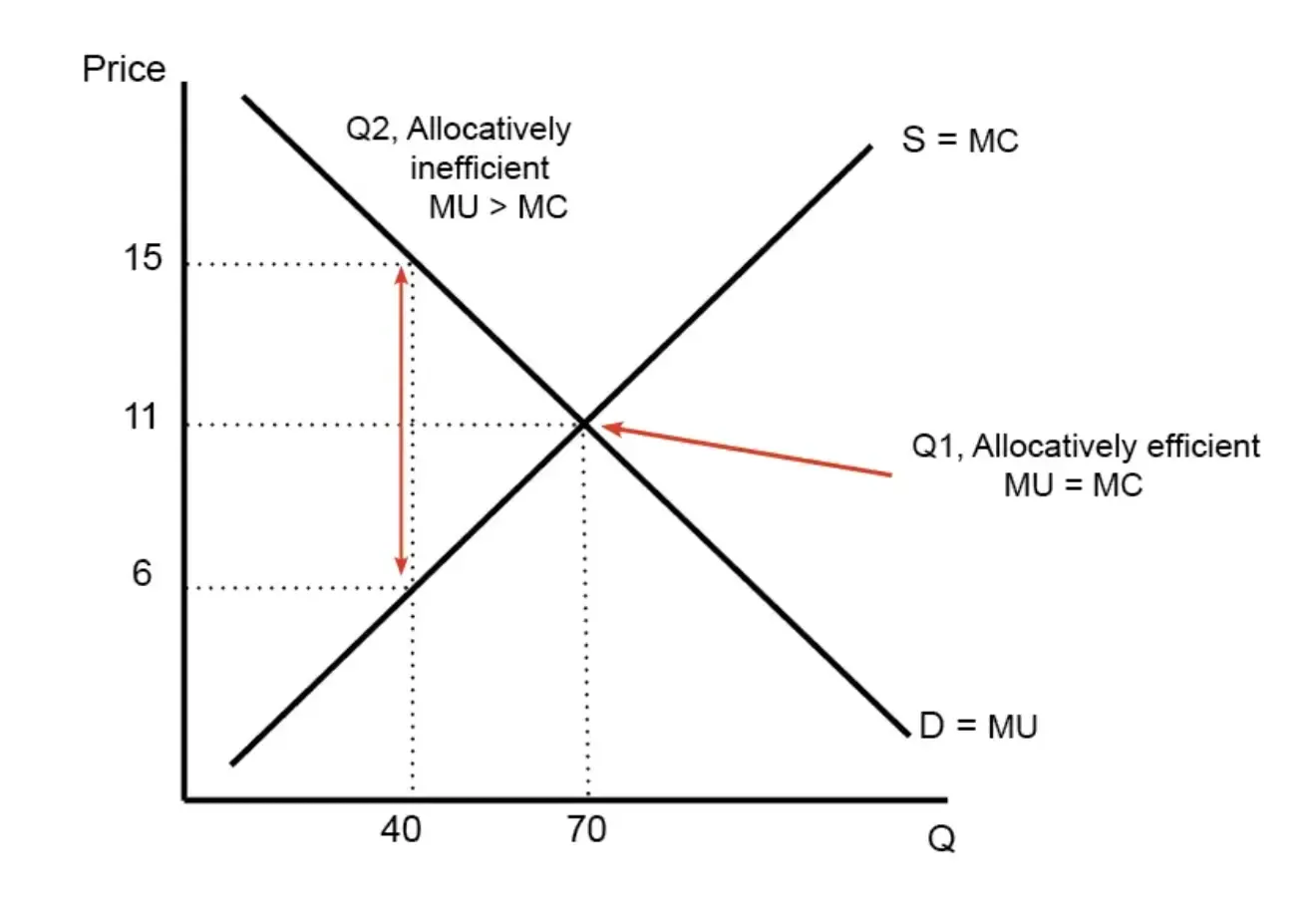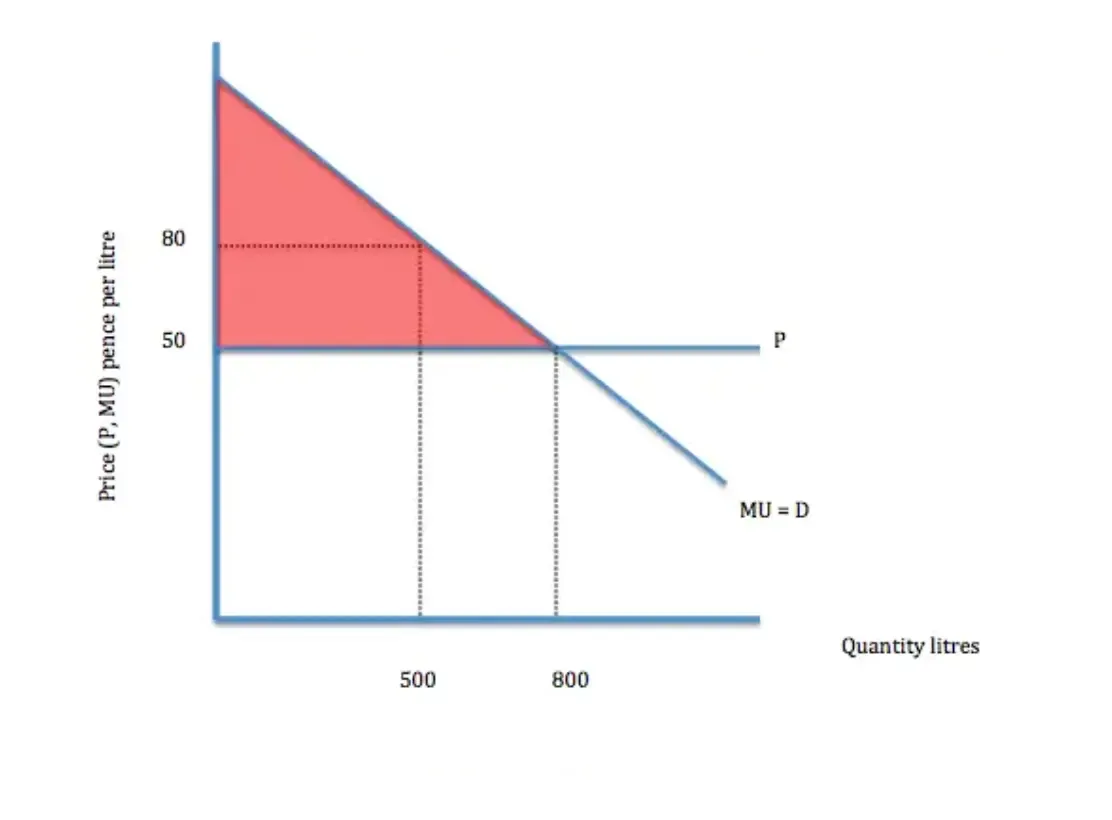
The Marginal Utility Theory
Marginal utility theory examines consumers’ increase in satisfaction from consuming an additional unit of a good.
- Utility – The idea that people get a specific level of utility, happiness, or satisfaction from consuming goods and services
- Marginal utility – The benefit that results from consuming an extra unit
Utility is not constant; in many cases, there is diminishing marginal utility. Think of it this way: the first piece of chocolate cake you eat gives more utility than the seventh piece.

In the example above, the total utility of 300 is maximized after four pieces of chocolate cake. Since the fifth piece of chocolate cake gives zero marginal utility, we’re indifferent between four and five pieces. But if we eat the sixth piece of chocolate cake, we start to feel a bit sick, so we get negative utility.
Utility and Price
- Giving utility a monetary value is one way to measure it.
- If a person would pay $0.90 for a piece of cake, we can say the utility of the piece of cake is at least $0.90.
How Much to Consume?

- In the example above, if a piece of cake costs $0.90, it would make sense to consume two pieces.
- The first piece gives $1.20 of utility, which is more than the price of $0.90.
- The second piece gives a utility that is equal to the price.
- The third piece of cake would give a marginal utility of $0.60, lower than the price of $0.90.
Marginal Utility and Allocative Efficiency
Imagine the consumption is a quantity of 40. The price is $15 at this quantity, but the marginal cost is $6. Here, the utility or marginal benefit is larger than the marginal cost. There is a deadweight welfare loss, as well as underconsumption of the good.

Where MC = MY of $11, allocative efficiency occurs.
Consumer Surplus
The consumer surplus is the excess of what a consumer would’ve been prepared to pay in comparison to what they actually pay.
A Person’s Consumer Surplus from Petrol

- In the diagram above, at Q 500 liters, the price is 50p, and the MU is 80p.
- A rational consumer will increase petrol consumption until the MU of petrol is equal to the price at 50p as well as a quantity of 800.
- You can calculate Marginal Consumer Surplus by taking the excess of a person’s total utility from the consumption of a good or MU divided by the price paid. MCS = MU – P
The Optimum Level of Consumption
The optimum level of consumption for one product or service would be consuming a quantity of it until MU = Price. Think about it like this: Why would you pay $0.75 for the cake if it only gave you $0.50 worth of utility?
Demand Curve and Marginal Utility
Our marginal utility creates our demand curve. For instance, if a good gives us more satisfaction, perhaps because it becomes more fashionable, our MU and our demand curve will both shift to the right.
Choosing Between Different Goods
In real life, we aren’t just deciding how much of one item to buy. We also make decisions between various combinations of goods. The Equi-Marginal Principle in consumption states that consumers will maximize total utility from their income through the consumption of a combination of goods in which MUa/MUb = Pa/Pb.
Suppose bread is $1 and chicken is $2.
- Since chicken is twice as expensive, it makes sense to choose a quantity of chicken where its marginal utility was twice that of bread.
- You’d tend to buy less chicken to ensure its marginal utility justified its higher price.
- In a situation where chicken gave three times as much marginal utility but was only twice as expensive, it’d make sense to buy more chicken up to the point that marginal utility fell to that ratio.
Defining Utility
- According to Bentham and Mill, utilitarianism is the accumulation of pleasure with the subtraction of pain.
- Cardinal utility is the idea that utility can be measured in a quantifiable measure called utils. This was argued by neoclassical economists including Carl Menger, Leon Walrus, and Alfred Marshall.
- J.R. Hicks argued for ordinal utility, the idea the consumers struggle to give definitive utils, but are capable of putting various choices in order of preference.
- Von Mises established the idea of satisfaction of wants, which says that it’s more difficult to quantify utility. He proposed that the wants’ satisfaction could be measured to some extent, but then became more challenging.


